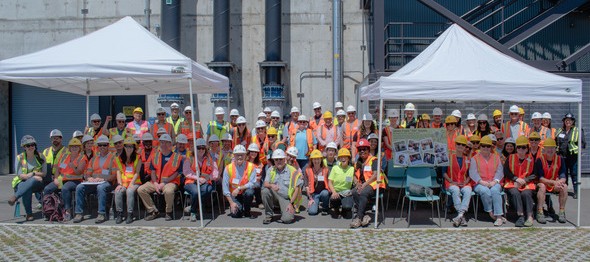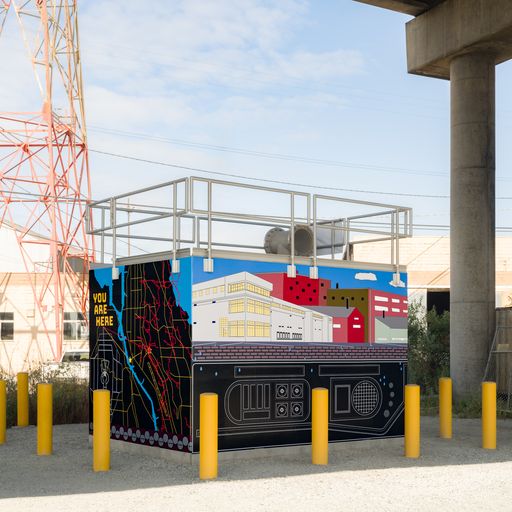Georgetown Wet Weather Treatment Station project
The Georgetown Wet Weather Treatment Station began operating in fall 2022, cleaning millions of gallons of polluted stormwater runoff that would have otherwise flowed directly into the Duwamish River and Puget Sound.
Construction completed 2023

The Georgetown Wet Weather Treatment Station (WWTS) earned the coveted “Platinum” designation from the Institute for Sustainable Infrastructure’s Envision rating system. This is the first Platinum-awarded Envision project in Washington and recognizes the County’s commitment to sustainable communities and the environment.
Educational programming and tours
We offer education programing and public tours of Georgetown Wet Weather Treatment Station (facility page). Come learn about what a Wet Weather Treatment Station is, how the process works, and the importance of clean water.
Project description

The Georgetown Wet Weather Treatment Station, located at the corner of 4th Avenue and South Michigan Street in Seattle’s Georgetown neighborhood, can treat up to 70 million gallons of combined rain and wastewater a day that would otherwise discharge directly to the Duwamish River during heavy storms. Before the station was completed in 2022, heavy rains would fill up the area's sewer pipes, sending polluted runoff and sewage through a pipe into the river. Construction began in 2018 and was completed in 2023.

Construction photos
Ready for rain
The Georgetown Wet Weather Treatment Station is now operating, cleaning millions of gallons of polluted stormwater runoff that would have otherwise flowed directly into the Duwamish River and Puget Sound. Keep an eye on the facility after large rain events. When it's time to start processing the polluted stormwater, our facility will light up so you know it's working. This wonderful piece of art, "Theater of a Storm", by Blanca Lighting, was developed based on community requests to understand when the station was operational.

Don Wilkison's Hidden River project starts at our outfall site under the First Avenue South Bridge
Don Wilkison's Hidden River project considers the invisible architecture of wastewater treatment through a series of outdoor posters and public events highlighting clean-water efforts.
Hidden River includes multiple components, two of which are located at:
- Georgetown Wet Weather Treatment Station Outfall Site (15 S River Street, Seattle, WA 98109)
- Rainier Valley Wet Weather Storage Facility (2710 S Hanford Street, Seattle, WA).
Downstream (pictured below), is a set of four unique poster designs, that hang on a drop structure under the First Avenue South Bridge. These posters tell visual stories about our water systems and neighborhood connections to the Georgetown Wet Weather Treatment Station. Midstream, a custom banner, is installed at the Rainier Valley location. And Headwaters, a series of free public events, will provide clean water information as well as artist-designed packets of pollinator seeds with planting instructions.
Visit the Hidden River project website for more info and updates.
Wilkison's artworks and programming are an extension of the “Hidden Rivers/Invisible Architecture” theme devised by Sans façon in their groundbreaking art plan for WTD’s Combined Sewer Overflow (CSO) system.

The Georgetown Wet Weather Treatment Station Outfall site displays art showing buildings above ground and an artistic representation of machinery used to manage wastewater flows.

 Translate
Translate